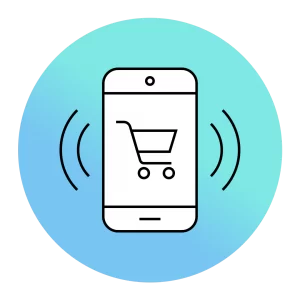
A little over a year ago, we would have chuckled at the thought of a 400% spike in demand for home bread-making machines or scrambling to find toilet paper at our local grocery store. Zoom birthday parties? Virtual happy hours? These felt a bit amusing a year ago, yet here we are.
In hindsight, it is easy to see how those events unfolded. Consumers were battened down at home, seeking products and services that provided safety, security, and comfort. Necessities such as toilet paper, groceries, and clothing that were typically purchased in brick-and-mortar stores were suddenly in high demand as an online purchase. Curbside pickup services exploded and the sale of home goods increased as more people spent time at home ‘nesting.’
Life certainly feels – different – since the COVID-19 pandemic began. While we hope the TP hoarding is over, there are consumer behavioral changes the pandemic accelerated – both surprising and expected – that are here to stay. Online sales of necessities (think TP) and luxuries (bread, anyone?) are expected to continue.
Even prior to the pandemic, retailers were facing challenges competing with large online marketplaces and e-commerce giants like Amazon. These challenges are now magnified, particularly for small and medium retailers. The digital trends we saw in 2020 are likely to continue and companies that adopt an e-commerce strategy are best positioned to succeed in a post-pandemic environment.
Digital Trends Here to Stay

Online retail sales soared in 2020, with 10 years of e-commerce growth occurring in just 90 days at the peak of the coronavirus pandemic. In the United States alone, consumers spent $861.12 billion online in 2020, up 44% from 2019. The latest data and research indicate that consumers are expected to continue the behaviors they adopted during stay-at-home orders, and online spending will continue to rise. In fact, according to a recent study released by ESET, 44% of consumers will continue shopping online post-pandemic.
What lessons have we learned from the surge in e-commerce last year and how can companies adapt and shift their strategies? It is important to understand what trends are here to stay.
Consumer Led Priorities: Fast, Efficient, Safe, Personal
Today’s consumers are looking for a fast, efficient, safe, and personal online experience. Your website and e-commerce platform should anticipate users’ needs and provide an easy, first-class experience from browsing to researching to purchasing. Consumers appreciate a quick-loading website, intuitive navigation and information that is easy to find.
WordPress, an open-source website builder and our content management system of choice, makes several of these tasks easy through plugins specifically designed to optimize e-commerce websites.
WooCommerce, an open-source plugin for WordPress, is our preferred e-commerce platform for its ease of use and security features. WooCommerce offers a simple and flexible shopping experience and integrates with popular payment gateways.
To create a fast, efficient, safe, and personal online e-commerce experience, companies should also consider a website design strategy that includes strong UX (user experience) elements and e-commerce website best practices including:
Swift Site Speed:

The concept of instant gratification isn’t new and extends to all facets of life including online shopping. Your website load time is linked to your website bounce rate, or how many users leave the site rather than viewing other pages or making a purchase.
Your website should load in under three seconds, even quicker for e-commerce sites. To maximize site speed, be sure to optimize your e-commerce platform configuration, specify image dimensions, and utilize browser caching.
Your site’s mobile experience is a priority. Nearly 50% of all global e-commerce sales in 2020 happened on mobile devices and prior to the pandemic, mobile accounted for more than 90% of total e-commerce growth. Responsive WordPress websites, progressive web apps, and accelerated mobile pages (AMP) all address site speed for mobile shoppers.
Secure Data:
It is important to protect your customers’ data not only to secure online transactions but also to maintain trust between you and the consumer. Choosing the right e-commerce platform, implementing SSL certificates, adopting two-factor authentication, and using a VPN when dealing with customer data helps to protect you and your customers from fraud.
Intuitive Navigation:

You know how you feel when you make a wrong turn in a city you are unfamiliar with? There is a moment of confusion. The same feeling happens when a website visitor cannot find their way around your website. Intuitive navigation helps reduce bounce rates on websites and will keep your website visitors engaged, active, and more likely to buy.
Using intuitive site menus, make it easy for shoppers to find key information such as shipping and return policies, contact information, and in the case of a hybrid sales model (online and in-person), safety protocols and hours of operation.
Brand Loyalty Through a Personal Touch:
One feature missing from the retail experience of the stay-at-home era was the loss of personal connection between brands and their customers. While physical distance helped keep our communities safe and healthy, it created a barrier between companies and their customers.
Consumers crave a connection to their favorite brands, and companies that invest in building an online community can nurture the customer relationship. While Amazon is in an e-commerce league of its own, there are personalization approaches the giant uses that many e-retailers can adopt that benefit both the brand and the consumer.
Personalized product recommendations, targeted customer communications, loyalty amenities (think free shipping, promo codes, and unique sale items), and honest user reviews are all ways to increase brand loyalty while adding a personal touch to the online shopping experience.
Charging Forward: Adapt, Test, Pivot
While e-commerce growth is expected to flatten as we emerge from the pandemic, the consumer trends of 2020 and the shift to online shopping will become, dare we say it, the ‘new normal.’ Focusing on the future of e-commerce is an intentional, strategic decision that requires an adaptable mindset.
Brands without an e-commerce platform built with a user-experience approach are at risk to lose potential customers and revenue. Companies that sell the best-ever bread-making machine will lose customers if their websites do not meet buyer priorities.
E-commerce is more than just a transaction or an online sale; it is an intentional relationship built with your customers. Adapt, test, and pivot your strategies to see what works for your brand to meet the needs of your customers. The COVID-19 pandemic has forever changed how people shop and companies with a strong e-commerce infrastructure are best positioned to succeed. Especially those companies selling TP and bread making machines.
Struggling with your e-commerce strategy? Give us a shout – our team of designers and developers love a challenge and can work with you to find a path forward.
Sources:
BigCommerce: Understanding the COVID-19 Effect on Online Shopping Behavior, Business Insider: The coronavirus outbreak has prompted people around the world to panic buy toilet paper. Here’s why., Digital Commerce 360: Charts: How the coronavirus is changing ecommerce, ESET: Survey Finds 70% of Americans are Shopping More Online Than Before the Pandemic, Yet Only 38% Feel Very Secure When Doing So, Insider Intelligence: Global Ecommerce 2020, Insider Intelligence: US Ecommerce Growth Jumps to More than 30%, Accelerating Online Shopping Shift by Nearly 2 Years, Invesp: The Importance of Personalized Ecommerce & 4 Examples of How It’s Done, Marketing Land: Coronavirus and e-commerce: It’s complicated, McKinsey & Company: Five Fifty – The Quickening, Reuters: ‘Home nesting’ and telehealth spending to keep rising post-pandemic, McKinsey survey finds, Salesforce: Ecommerce Trends That Are Shaping the Way Businesses Sell Online, Shopify: The Future of Ecommerce Report 2021


